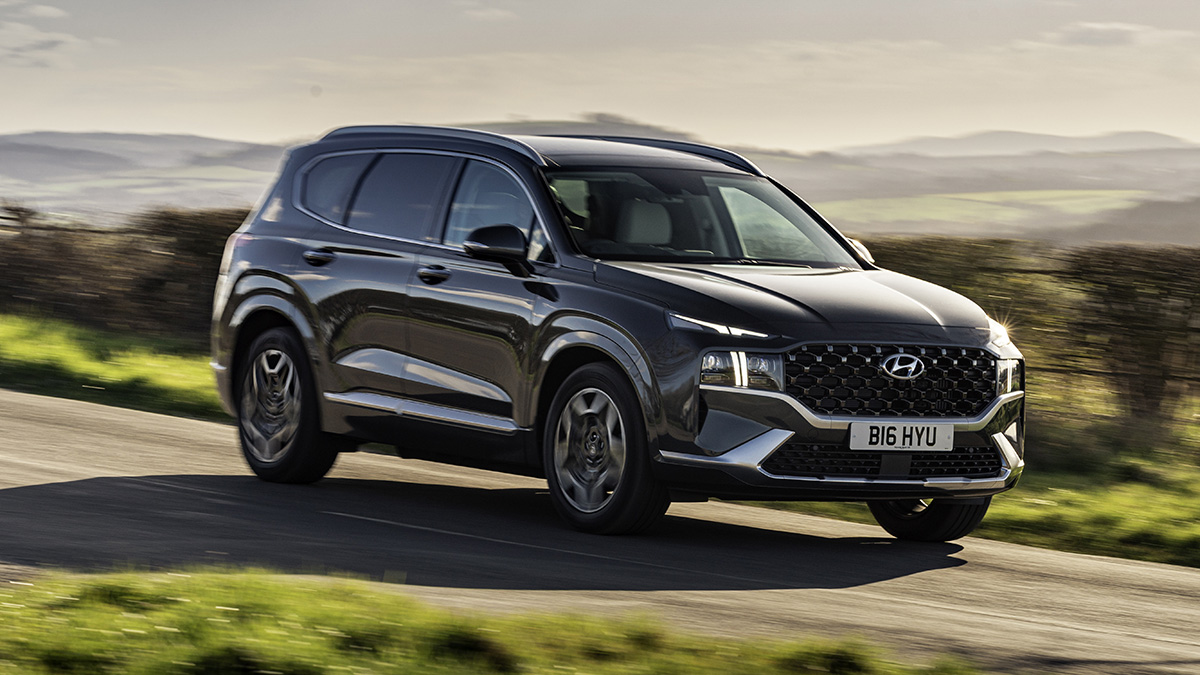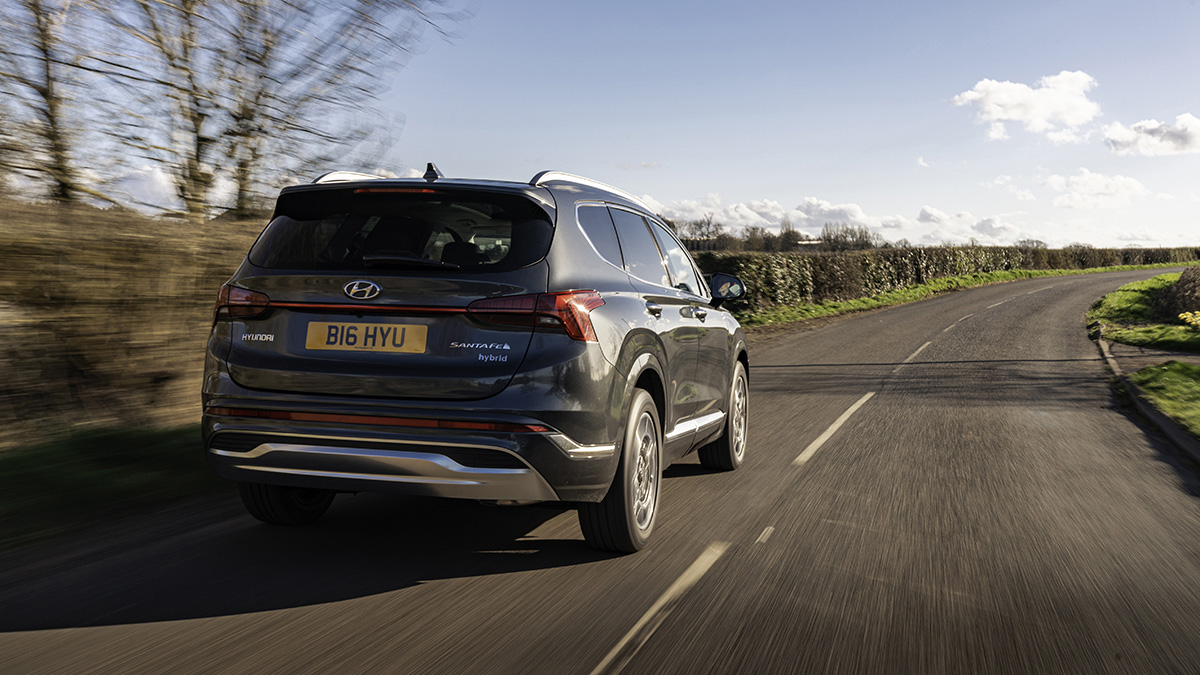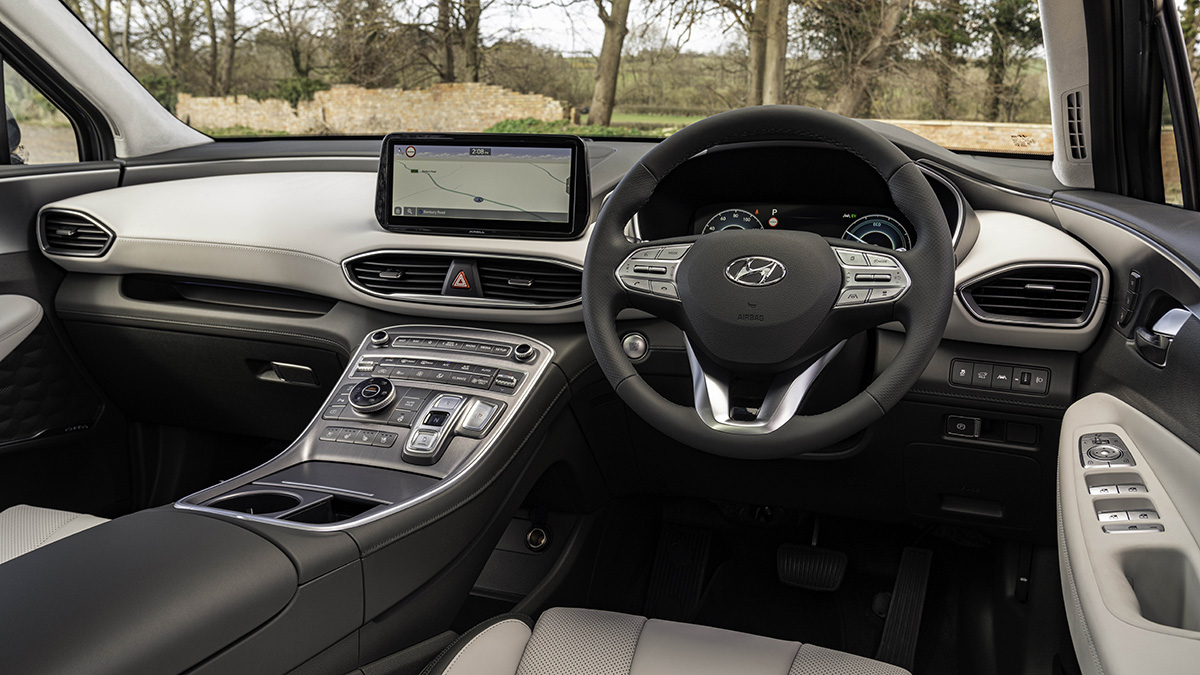
Driving
What is it like to drive?
Where some cars exist to make your life better, the Santa Fe’s remit is more about making your life easier. The Santa Fe is soothing and sensible.
So no cornering wildly on a Sunday morning, eh?
Er, no. The effort that Hyundai has put into refinement pays off with a relaxed drive. The Santa Fe offers a smooth ride that smothers out urban lumps and bumps and makes for a pleasant tourer along the motorway.
Hustling along a country road, it’s not quite as impressive. There’s a certain amount of lateral movement on the UK’s shoddy surfaces and pothole thunks as the suspension reaches the edge of its composure.
But it’s easy to forget this is a two-tonne car. Dial it back a notch and the car feels a bit more comfortable. What the handling lacks in outright feel it makes up for in predictability, going where you want, albeit there is a little bagginess around the straight-ahead.
And what about the driving modes?
The Santa Fe is available with 2WD as an option on the diesel and hybrid versions of the car – a pragmatic move – while the PHEV is only available with four-wheel drive. One perk of the 4x4 set-up is the opportunity to select driving modes – Eco, Sport or Smart – a peppy mix of the previous two.
Ooh, what happens then?
Flicking the dial changes throttle response and steering, as well as cycling through a nifty set of instrument panel graphics. Eco can feel a little dim-witted, while Sport weights up the steering and hangs on to gears for dear life. Smart is the Goldilocks option, for want of a better analogy. You can also select different modes for different terrains, such as mud or snow, for maximum traction.
Remind me of the engine choices...
There are three different powertrain options available on the Santa Fe: a 2.2-litre diesel and a 1.6-litre petrol in hybrid or PHEV guise. The diesel comes with either a six-speed manual (Premium spec only) or an eight-speed automatic gearbox, and its relaxed nature is well suited to the car. You might lament the lack of a smaller diesel option that rivals offer, but such is life.
The hybrid version of the Santa Fe is more about making a petrol engine option viable in a diesel-phobic era than outright eco Top Trumps – that’s what the plug-in version is for. The 59bhp electric motor prefers to act more in concert with the engine rather than trying to replace it: you can thank the weedy 1.5kWh battery for that.
There’s not sufficient time in EV mode to show off unless you really tickle the car along, but the electric motor will cut in at impressive moments, such as on a motorway cruise. The car also regularly prompts you to coast, by way of training you to eke the most out of the electrification.
It all adds up to official fuel consumption figures of 42.2mpg in the 2WD version and 38.2mpg in the 4WD car that aren’t impossible to get close to. We averaged 41.3mpg in our time with the car, which is pretty decent against the lab numbers.
That’s respectable! What about the plug-in version?
The PHEV powertrain is shared with the Kia Sorento, a seven-seat sibling on the same platform that should also go on your family car shortlist. The PHEV comes with a more powerful 90bhp e-motor that plays more of a part in getting the car about.
The plug-in gets a14kWh battery that’s good for around 36 miles of range and official fuel consumption of 173.7mpg. If you can keep the battery topped up (it’ll charge on a Type 2 plug in around four hours) then it’s the obvious choice for saving fuel.
The six-speed auto 'box in the hybrid and PHEV cars is bang average, doing a solid job without being particularly noteworthy. The car occasionally gets flummoxed at junctions, with a hesitancy before committing to the power you’ve asked of it. Likewise, you’re likely to try the steering wheel paddles once before deciding to let the car do the work – the gearbox is slow to react if you’re trying to short-shift, for example.
Featured

Trending this week
- Car Review
BMW 1 Series
- Top Gear's Top 9
Nine dreadful bits of 'homeware' made by carmakers






